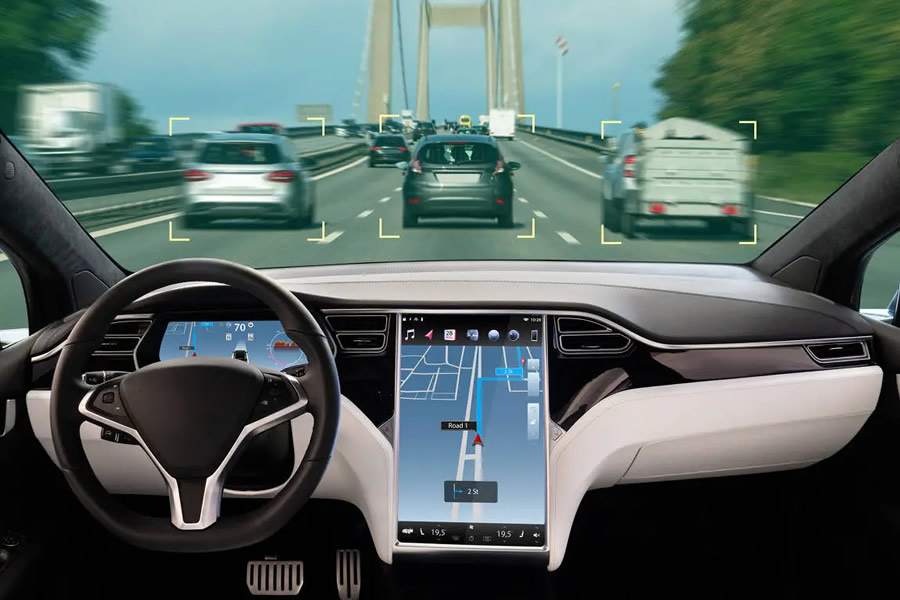Outlook on the Development Trends of Intelligent Vehicles
2025-02-25

1、 Technological innovation and upgrading
Maturity of autonomous driving technology:
Autonomous driving technology will continue to mature, gradually evolving from assisted driving at the L1-L2 level to autonomous driving at the L3 or even higher level.
It is expected that by 2025, the penetration rate of L2 level assisted driving will reach 65%, and the penetration rate of L3 level autonomous driving will also rapidly increase.
With the continuous advancement of technology, the commercial application of autonomous driving will gradually land, such as unmanned taxis, unmanned vehicles, etc.
The integration of electrification and intelligence:
Electrification and intelligence are the two major development trends in the automotive industry, which promote and integrate each other.
The popularization of electric vehicles has provided a broader stage for intelligent driving, and the application of intelligent driving technology has also enhanced the attractiveness and competitiveness of electric vehicles.
Application of Internet of Vehicles and Big Data:
The development of the Internet of Vehicles technology will make cars deeply integrated with the Internet and the Internet of Things, and realize the interconnection between vehicles, vehicles and infrastructure.
The application of big data will enable cars to more accurately perceive and analyze information such as road conditions and driving behavior, thereby optimizing driving strategies and improving safety.
2、 Market demand and policy support
The transformation of consumer demand:
As consumers' demands for car safety, comfort, convenience, and other aspects continue to increase, the market demand for smart cars will continue to grow.
Especially the younger generation of consumers, they are more willing to accept new things and advanced technologies, and have higher acceptance and expectations for smart cars.
Optimization of policy environment:
Governments around the world are actively promoting the development of the intelligent automotive industry, and have formulated a series of relevant policies, regulations, and standard systems.
Countries such as China, the United States, and Germany are accelerating the development and revision of regulations related to autonomous driving, providing legal protection for the commercial application of intelligent vehicles.
3、 Industrial chain synergy and development
Supply chain integration and optimization:
The development of smart cars will drive the upgrading and transformation of the entire industry chain, including suppliers of core components such as chips, sensors, radars, and cameras.
With the expansion of market size and the improvement of technological level, these suppliers will continuously integrate and optimize their industrial chain resources, improve production efficiency and product quality.
Cross border cooperation and win-win:
The development of intelligent vehicles requires cross industry cooperation and support, such as collaboration between enterprises in the fields of automotive manufacturing, information technology, artificial intelligence, and others.
Through cross-border cooperation, resource sharing, complementary advantages, and collaborative innovation can be achieved, jointly promoting the development of the intelligent automotive industry.
4、 Trends in Intelligence and Networking
The continuous improvement of intelligence level:
Intelligent vehicles will continuously integrate advanced technologies such as artificial intelligence and machine learning to achieve higher levels of intelligence and autonomous decision-making capabilities.
The continuous improvement and upgrading of functions such as intelligent driving assistance systems, intelligent cockpits, and intelligent navigation will bring users a more convenient, comfortable, and safe driving experience.
Deepening degree of networking:
With the continuous development of the Internet of Vehicles technology, intelligent vehicles will achieve deeper integration with the Internet, the Internet of Things, and so on.
Through the application of networked technology, intelligent vehicles can obtain real-time data such as road conditions, weather conditions, traffic control, etc., thereby optimizing driving strategies and improving safety.
5、 Challenges and opportunities coexist
Technical challenges:
The development of intelligent vehicles faces many technological challenges, such as the verification and testing of safety, reliability, stability, and other aspects of autonomous driving technology.
At the same time, it is necessary to address issues such as data transmission and information security in vehicle networking technology.
Market challenges:
The competition in the smart car market is becoming increasingly fierce, not only facing competition from traditional car manufacturers at home and abroad, but also facing challenges from emerging technology companies.
How to stand out in fierce market competition has become a question that smart car companies need to consider.
Development opportunities:
The development of smart cars has brought enormous market opportunities and commercial value.
Through technological innovation and industrial upgrading, intelligent automotive companies can explore new market space and growth points, achieving sustainable development.



